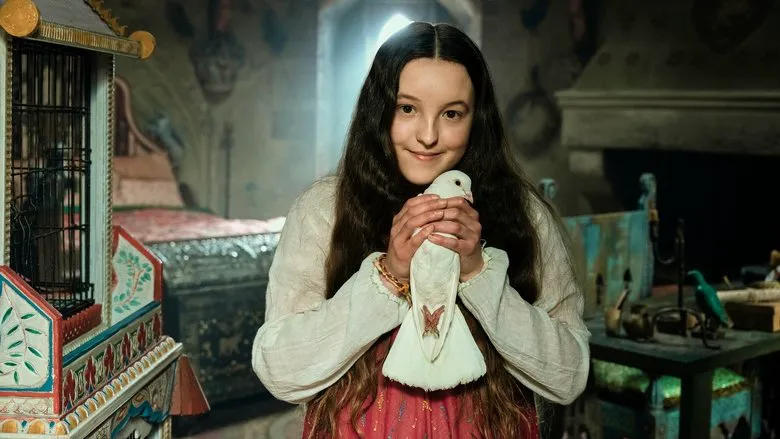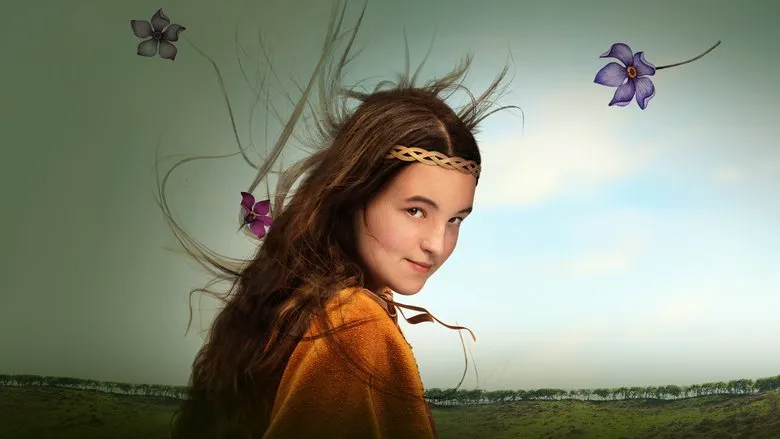After the somewhat controversial “Sharp Stick,” which uncompromisingly discussed the impact of reproductive health on a woman’s sexuality and mental stability, Lena Dunham has unexpectedly turned to a more audience-friendly cinematic palette. “Catherine Called Birdy” has everything we love about teen movies: a sensitive heart, warm maternal embraces, and, of course, a brave rebellious spirit capable of breaking down any walls of misunderstanding.
A Medieval Coming-of-Age Tale
The story is set in 1290 England. The main character, fourteen-year-old Catherine, nicknamed Birdy (Bella Ramsey), daughter of Lord Rollo (Andrew Scott) and Lady Aislinn (Billie Piper), stubbornly refuses to grow up and become a proper lady. Alas, time waits for no one, puberty inevitably arrives, and with it, a string of suitors eager for a prestigious title, but not particularly charming. In an effort to resist the imposed marriage, Catherine comes up with the most original escape routes, but all in vain: the family’s money is dwindling every day, and her father’s patience is running out. Only Birdy can save her relatives from impending ruin. All that remains is to find her the most advantageous match.

A Modern Sensibility in Medieval Garb
“Catherine Called Birdy” is an adaptation of the novel of the same name by American writer Karen Cushman, published in the 90s, long before the ideas of modern feminism took hold. Nevertheless, this book is a classic product of the postmodern era, ahead of its time by years, if not decades. All the main characters of “Catherine Called Birdy,” and especially fourteen-year-old Catherine, are endowed with a modern consciousness, even though they live in the setting of the 13th century. Perhaps this is the only reason why Birdy’s story does not end tragically - in the end, she gets her right to personal happiness, albeit in the concept of a fantasy parody of the Middle Ages.
 .jpeg)
.jpeg)
Dunham largely echoes Cushman’s text, adding a bit of modern aesthetics to her fictional cinematic universe: the smug Lord Rollo wears a playful tiger print, and the most poignant dialogue in the film takes place under the sensual composition “Fade Into You” by Mazzy Star, which, like Cushner’s book, came out in the distant 90s. There are also neat references to modern cinema in “Catherine Called Birdy” - it’s hard not to think of “Game of Thrones” when you see David Bradley and Bella Ramsey. Fortunately, Dunham’s film avoided forbidden incest, sudden poisonings, and a red wedding (although, there were hints).
Dunham’s Successful Experiment
By the way, for Lena Dunham, who has spent most of her life telling stories about sexually liberated women in the big city, entering the territory of costume cinema is a real and definitely successful experiment in her career. “Catherine Called Birdy” is devoid of the heartbreaking reflection of “Girls” and the caustic self-irony of “Sharp Stick.” There is a lot of disarmingly sincere naivety in this film, which only teenage girls have, there is also the warm charm of the provincial hinterland, where life flows like a wild stream in the forest - calmly and freely. But, most importantly, in “Catherine Called Birdy,” as in any other fairy tale, good always triumphs over evil, and love heals all emotional wounds.